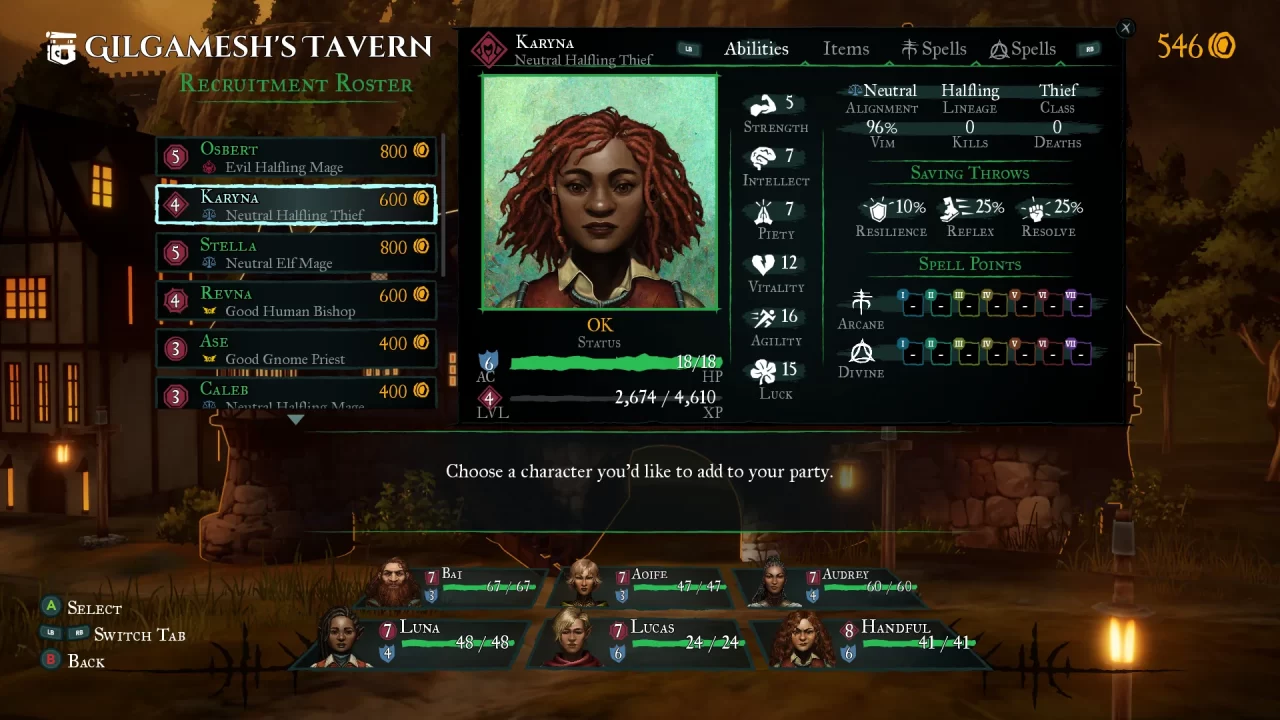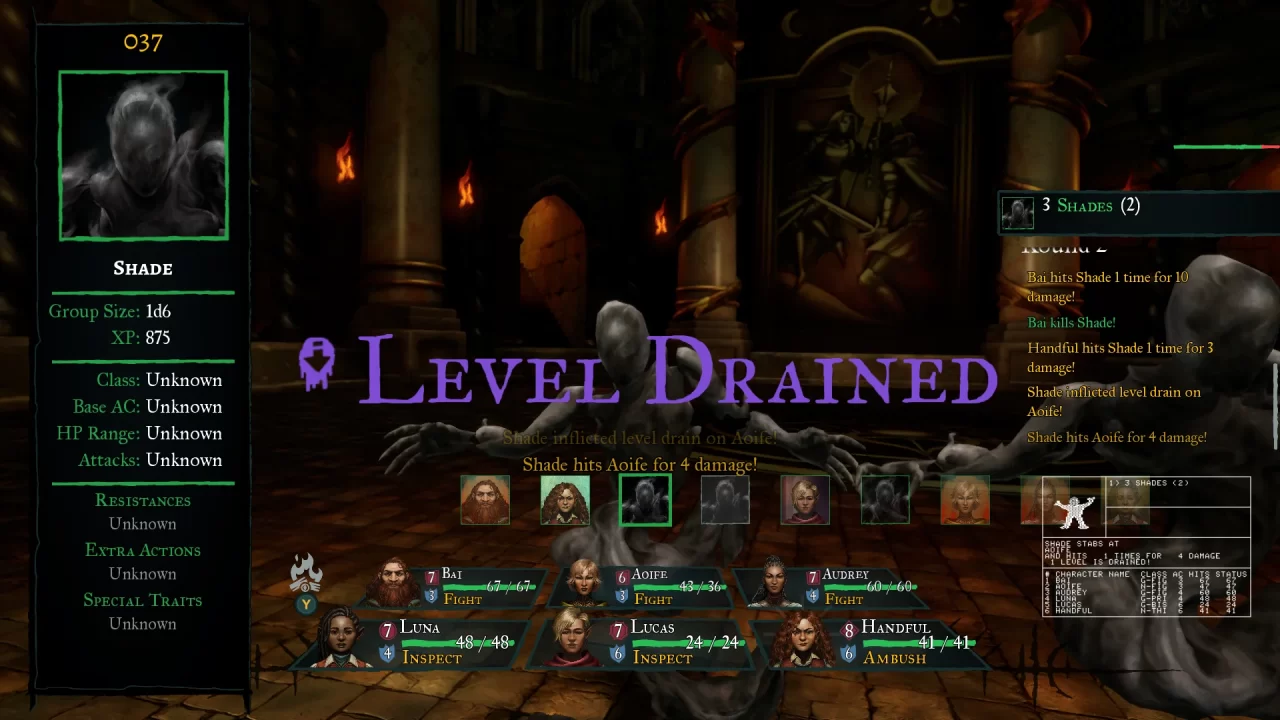Wizardry: Proving Grounds of the Mad Overlord turned me into a quivering wreck. Over this last week or so, the sheer thought of losing yet more brave adventurers to enemy blades, of being teleported to a distant part of a trap-laden dungeon, or of having to return to the safety of the surface with half my party paralysed, praying I can flee from a random encounter, has taken its toll. It’s been a mentally exhausting test of patience, just as the developers intended. Be that as it may, I still enjoyed my time with this classic DRPG, even if it has sometimes been an anxious slog. Few DRPGs are so deadly and confounding, and Wizardry: PGotMO takes this approach and dials it to maximum for an experience that is every bit as battering for the player as it is for their party.
First things first, though. Wizardry: PGotMO is a full remaster of the Sir-Tech Inc. original, which launched in 1981 to critical and commercial acclaim across a range of home machines. Several sequels followed, and the final Sir-Tech product was Wizardry 8 (2001). This final title may be most familiar to modern players, given that PC gaming became more mainstream by the turn of the millennium. Digital Eclipse crafted Wizardry: PGotMO with a deferential eye toward the original’s underlying game systems. Although all graphics, UI, and sound have been radically rebuilt from the ground up, the gameplay systems are intact. Not only does this speak to the strength of the original design and structure, but it allows a new generation of RPG fans to experience this historic game with a modern sheen.
At its core, Wizardry: PGotMO is as simple as you might expect, being the grandfather of the DRPG genre. You control a party of six intrepid adventurers as they explore The Maze, an expansive dungeon, on the trail of the powerful mage, Werdna. Trebor, the mad overlord, has set you on a quest to retrieve an amulet the mage stole from him. The story is pretty weak and bare-bones, but it must be said that a strong narrative thread is not a priority of the game’s intent. It’s all about providing a reason to go underground and explore ten levels of madness and mayhem. The Maze exists underneath the settlement around Trebor’s castle, and the party returns here between expeditions. The Castle Courtyard is not large, and besides offering rest, supplies, and the opportunity to resurrect/heal party members, there is nothing else to do.

After creating your starting crew, you can (and will need to) recruit other adventurers as they arrive at the hub’s tavern. Recruits fall into several races and classes modeled on traditional RPG tropes and have strong echoes of Dungeons and Dragons 1st Edition. Fighters have a decent armor class and more hit points, while Mages are incredibly squishy but also capable of powerful ranged attacks. Other classes, such as the thief, offer a more specialized role. As well as hiding and ambushing enemies, they can detect and disarm traps on chests that pop up in dungeons. Characters gain experience and levels as they defeat enemies, and this unlocks the next set of abilities or improvements. These improvements are static based on character class, so you can’t select a given skill tree or customize. Having said that, attribute growth and spell progression are still randomised, so characters of the same class can have different spell lists.
There’s no point getting attached to any members of your party, created or otherwise. They die often and there’s no interplay or background with any of them besides a few short quotes during exploration. In fact, after several fatalities, I took to renaming new characters after their class to speed up my decision-making in battle. They never lasted long enough for me to associate name to face to class.
As I explored deeper dungeon levels, it became important to rotate classes and characters to take advantage of particular approaches to a given run. Areas with a high degree of undead mobs meant I relied on priests more, thanks to their ability to dispel these enemies. But if I wanted to grind out for a treasure run and loot some chests, I’d sacrifice some power for a thief to use their trap-finding abilities. Another reason for careful rotation is purely for sustainability. Having a pool of similarly-levelled classes helps to offset inevitable character deaths and makes levelling up a new character less of a hassle.
Like the original Wizardry, movement and combat take place in first person. Your party explores the dungeon one tile at a time, mapping out their immediate surroundings and looking for clues or keys to progress. It pays to have paper and pen handy if you’re going old-school; dungeon mapping resets from one dungeon run to the next. Enemies appear randomly or as a room’s guardians. Once this happens, the action shifts to the combat UI, with timeline-based turns that allow characters to attack, perform magic, or use another ability. Both enemies and allies form front and back rows, with the back row gaining protection from melee attacks. Sometimes, you (or your enemies) can attack with surprise and strike first. Being ambushed when a high number of mobs have spawned can be devastating. Running from battle is an important part of the caution and patience the game demands, and you quickly learn that discretion is the better part of valor if you wish to have any chance of leveling up the same set of heroes for at least a little while.
There’s a decent sense of rhythm to the combat thanks to a smooth, intuitive UI and control system. The game layers the information well too, from the combat log to details about enemy stats and abilities. True to its hardcore roots, combat adds additional wrinkles. Characters can Inspect foes during their turn to determine their stats and resistances. This information builds up over time until you get a good reckoning of what size enemy group will appear next and what their range of HP is, for example. The other wrinkle is that enemy selection is often random when making attacks or casting spells. This adds to the general difficulty and tension across the game, but it’s also frustrating when your party repeatedly hits the sub-optimal target. Why can’t my highly trained fighter not target a specific front-row creature?
Across both exploration and combat, the remade graphics are evocative and detailed. The background dungeon artwork, and artwork for combat and enemies, is smoothly animated and richly coloured. Each dungeon level offers its own thematic twist, but they are clear enough in design to ensure visibility of key details and clues. In a cool and clever conceit, the original version of the game’s graphics and underlying number crunching exist as a thumbnail image in the lower-right corner of the game display. It’s remarkable to undertake an epic battle in 2024 while seeing exactly how it was represented in 1981. It’s not a device I’ve seen in other remakes, certainly not in real time, and credit to the developers for offering such a window into design through the decades.
Sound design in Wizardry: PGotMO is bombastic and fitting. A range of sounds from choral pipes to regal fanfares represents the full spectrum of the fantasy genre well. Oftentimes, it serves as encouragement to delve deeper into the dungeon levels, or as a frantic accompaniment in reaching the surface. A few environmental effects, like the shuffling of travel around the dungeon or comedic outbursts when your party hits a wall or attempts to move through a solid space.
Given the patience needed to complete each dungeon level and find the keys or objects to progress, the game offers dozens of hours of gameplay. If you’ve not been careful in constructing and rotating a roster of different classes, you’re likely to spend an increased amount of time grinding levels for weak characters to replace more experienced losses. Gold is quite plentiful, but prices for decent gear and higher-level resurrections become very costly. It can be quite easy to spend your way to a point where you have to effectively start over. There’s plenty to find in the Maze, though. It offers increasingly vicious and clever enemies, improved gear, and a few rare items that can make a difference in a pinch. It’s all about whether you want to take the risk or stick to what you have and grind. Patiently. Cautiously.

Wizardry: PGotMO is one of those games where every step could be your last, but you’ll be entertained making those steps. Despite being a foundation of the genre, it does not provide an easy entry point for new players. It requires a high degree of patience, and this slow approach won’t be to everyone’s tastes. The graphics, sounds, and overall user experience are detailed and well thought out, with some lovely homages to the original in both setting and the number of OG player options. For a game that laid the blueprint for so much videogame history that followed it, taking a step back into the Proving Grounds felt like entering hallowed ground, like remembering a dream in vivid, modern detail. Just know that such a dream can become a quivering nightmare without warning. Be prepared to possibly lose everything in a single run, or a single combat, or even a single fudged combat round, and it’s a grand old time.

